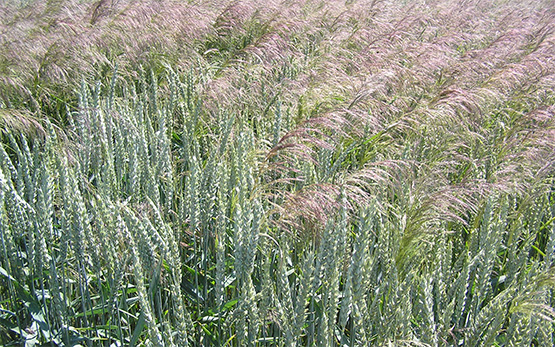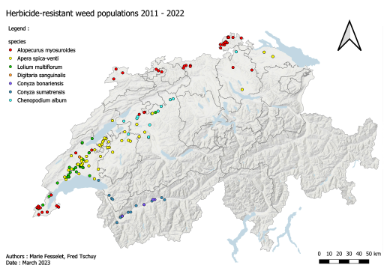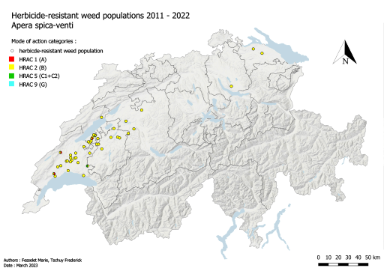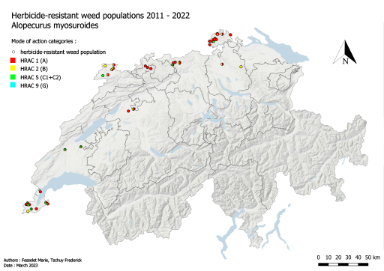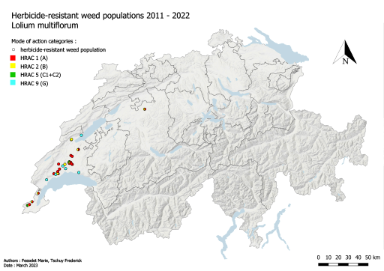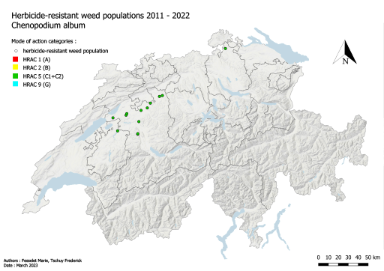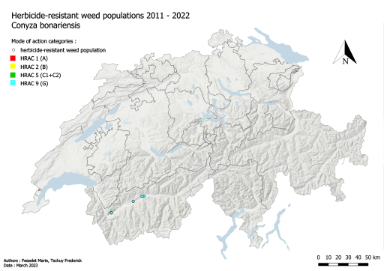Herbicide resistance is a worldwide problem of modern agriculture which worsens from year to year. The repeated use of herbicides with the same modes of action leads to the risk of weeds developing resistance and surviving properly executed treatments. Thanks to its small-scale agriculture and a diversified crop rotation, the level of resistance in Switzerland is currently low.
Starting in 2011, Agroscope set up a monitoring programme at national level with a view to monitoring the emergence of new resistances and controlling their spread. This programme is important for the local development of prevention strategies in partnership with the cantonal plant-protection agencies and other stakeholders in the sector.
In Switzerland, the weed species currently affected by resistances are three monocotyledons (blackgrass (Alopecurus myosuroides), silky bentgrass (Apera spica-venti) and Italian ryegrass (Lolium multiflorum)), and three dicotyledons (lambs quarters (Chenopodium album), blood stanch (Conyza canadensis) and Argentine fleabane (Conyza bonariensis)). These species have developed a resistance to four different biochemical modes of action as defined at international level by the Herbicide Resistance Action Committee (HRAC): HRAC 1, HRAC 2, HRAC 5 and HRAC 9.
If you, as a farming-sector professional, believe that you have discovered herbicide-resistant weeds in your fields, please contact your cantonal plant-protection service to have the case examined.


